Strawberry- Vanilla- Cupcakes
You can find the recipe (in german) on my Blog: http://heikehameister.blogspot.com/
Need a bike?
The bicycle sharing system makes numbers of bicycles available as a mobility service in different german cities.
Berlin – Potsdamer Platz
The Potsdamer Platz is a public square and traffic intersection in the centre of Berlin, Germany and the history can be tracked back to the year 1685.
In 1924 one of the first traffic lights in Continental Europe were built at Potsdamer Platz in an attempt to control the sheer volume of traffic passing through. More than 100.000 people and more than 60.000 cars, horse-drawn vehicles, handcarts and bycicles passed the place daily.
During World War II almost all of the buildings around Potsdamer Platz were turned to rubble by air raids and heavy artillery bombardment, but commercial life reappeared in the ruins around Potsdamer Platz within just a few weeks of war’s end.
1961, the construction of the Berliner Wall found the Potsdamer Platz physically divided in two peaces and became totally desolate. Only two buildings in the immediate vicinity of Potsdamer Platz still stood in the east part of Berlin. Below ground, the S-Bahn line remained open, without stopping at Potsdamer Platz. Therefore, the trains briefly passed through East German territory en route from one part of West Berlin to another and the S-Bahn station became the most infamous of several Geisterbahnhöfe (ghost stations).
After the opening of the Berliner Wall in 1989, Potsdamer Platz was one of the first places to cross the border between East and West Berlin. Nowadays, the square became the focus of attention again and became the key area where the city had an opportunity to express itself.
Wartburg
The Wartburg is situated near Eisenach (Thuringia) and was founded in 1068 by the count of Schauenburg. In 1207 the castle became the venue of the Sängerkrieg (Minstrels’ Contest) in which Minnesänger (Walther von der Vogelweide or Wolfram von Eschenbach) took part and was treated with poetic licence in Richard Wagner’s opera Tannhäuser.
From May 1521 until March 1522, Martin Luther stayed at the castle after his excommunication by Pope Leo X and translated the New Testament into German, the first translation into a modern language.
In 1817, about 450 students came together and called for German unity. This and similar events at Wartburg during the Revolutions of 1848 are considered seminal moments in the movement for German unification.
The Landgrafenhaus (romanesque palace) is the oldest building and contains the Sängersaal (Hall of the Minstrels), which is the setting for Richard Wagners Tannhäuser.
Crathes Castle, Aberdeenshire
Crathes Castle is a 16th century castle near Banchory in Aberdeenshire and served as the ancestral seat of the Burnetts of Leys until gifted to the National Trust for Scotland (1951). In the year 1323, the land was given as a gift to the Burnett of Leys family by King Robert the Bruce. The construction of the current tower house was begun in 1553 and finished 1596 by Alexander Burnett of Leys.
Aberdeen Harbour
Through more than eight centuries, Aberdeen Harbour has an important role in the development and prosperity of North-east Scotland. In the year 1136 was the first recorded reference, when King David 1st of Scotland granted the Bishops of Aberdeen the right to levy a tithe on all ships trading at the port. The arrival of the offshore oil and gas industry in the mid 1960s resulted in a transformation into one of the most modern ports in Europe. Nowadays, Aberdeen Harbour handles around 4 million tonnes of cargo per year.
Stirling – The Church of the Holy Rude
The Church of the Holy Rude was founded in 1129 and it is the second oldest building in the city after Stirling castle. On 29 July 1567 the infant son of Mary, Queen of Scots, was crowned James VI of Scotland here.
